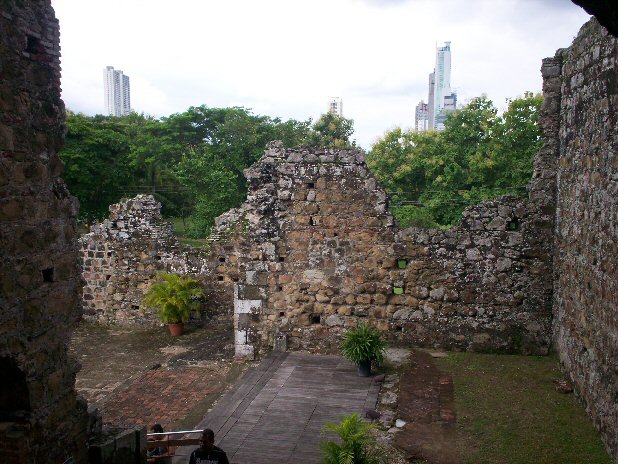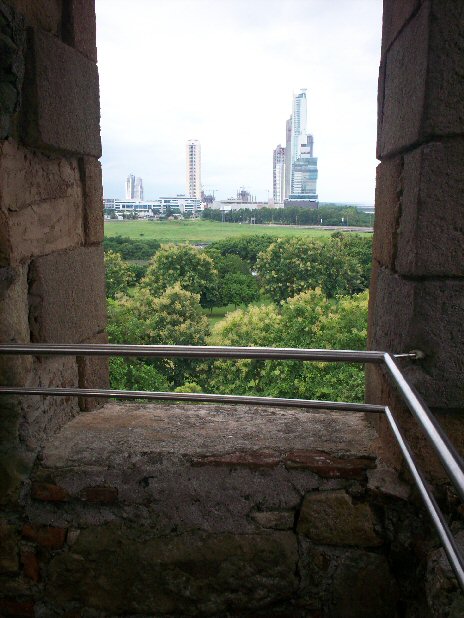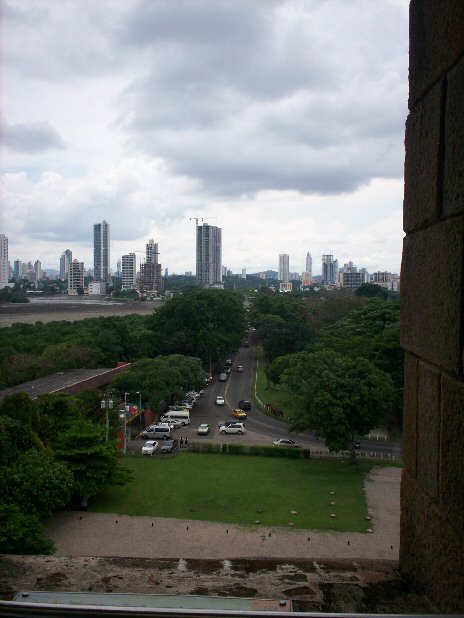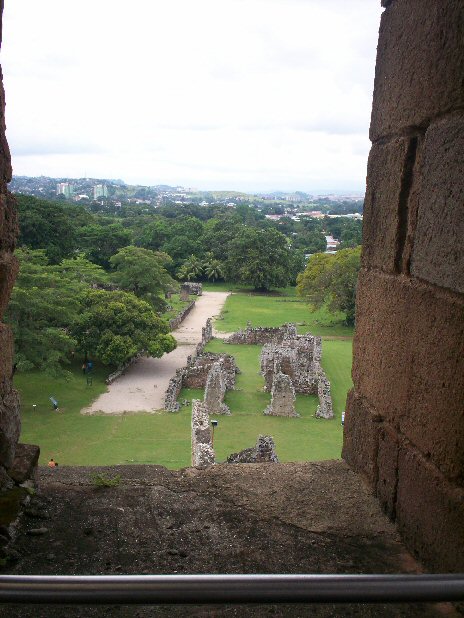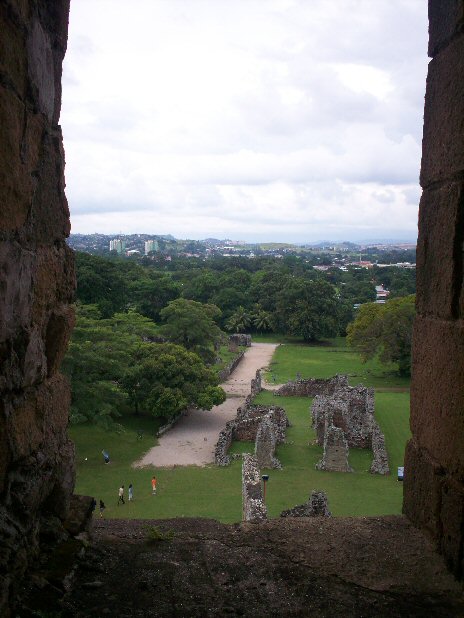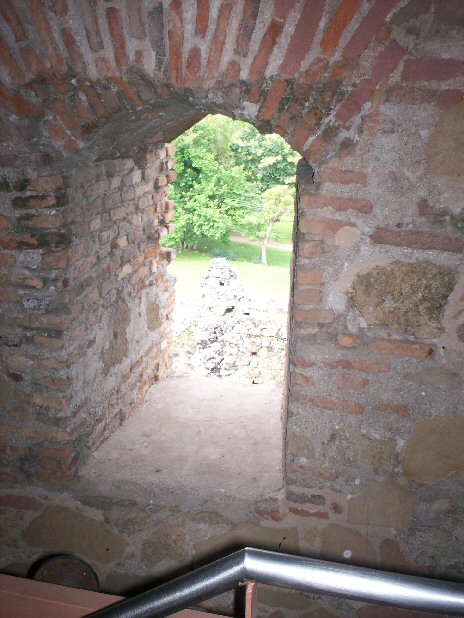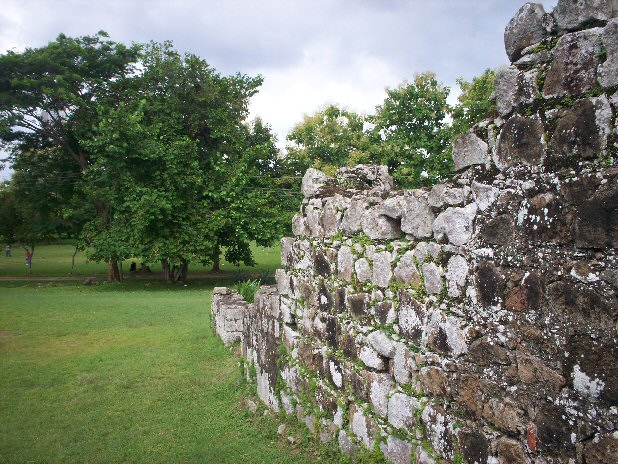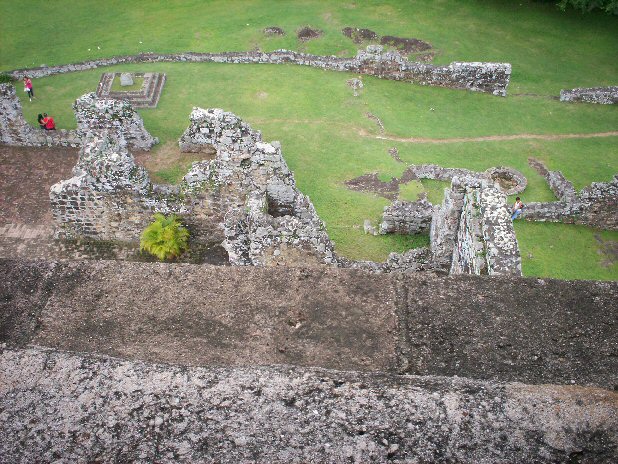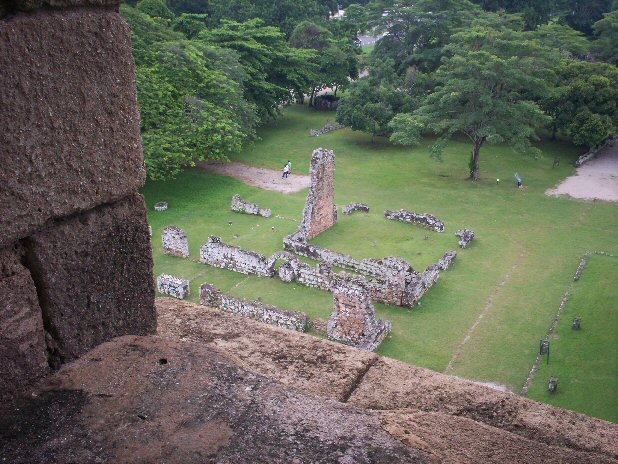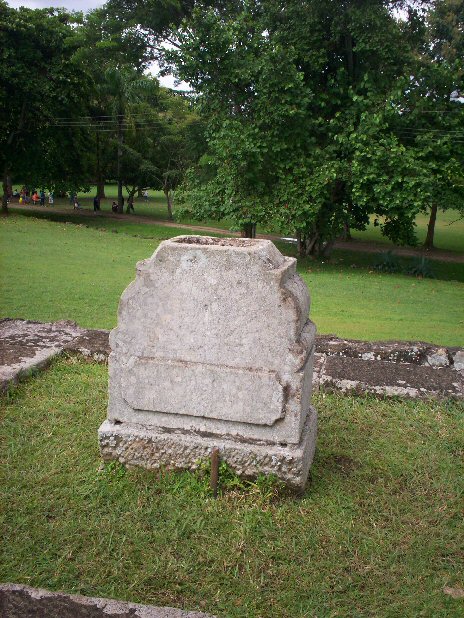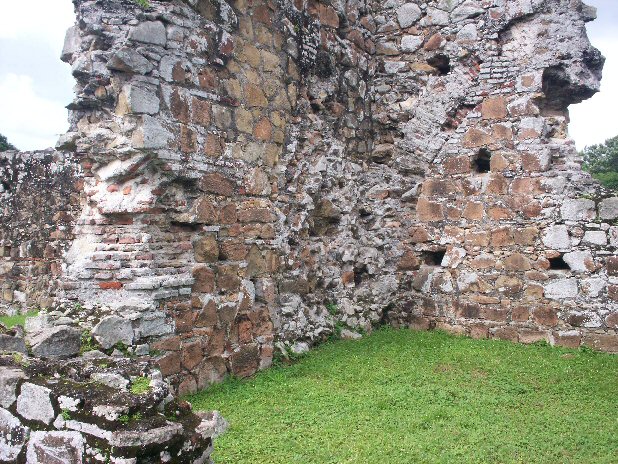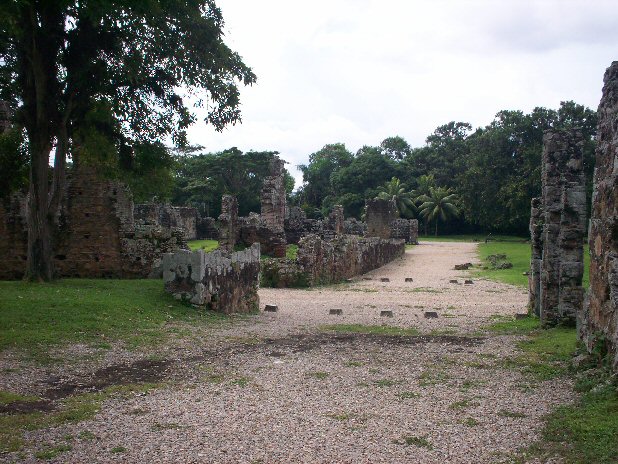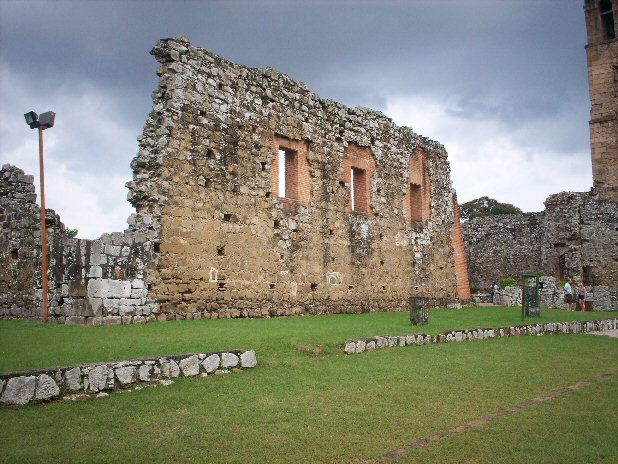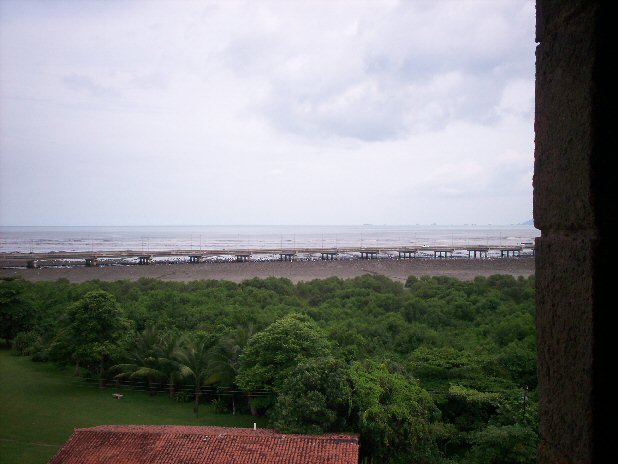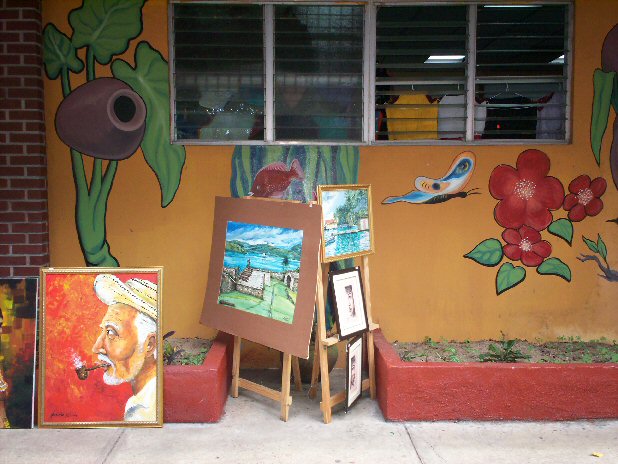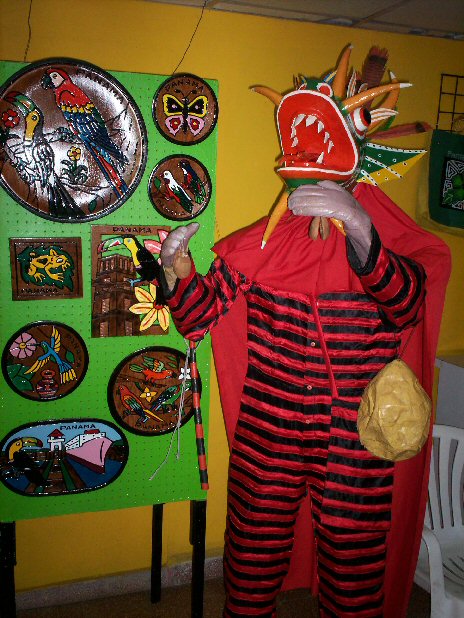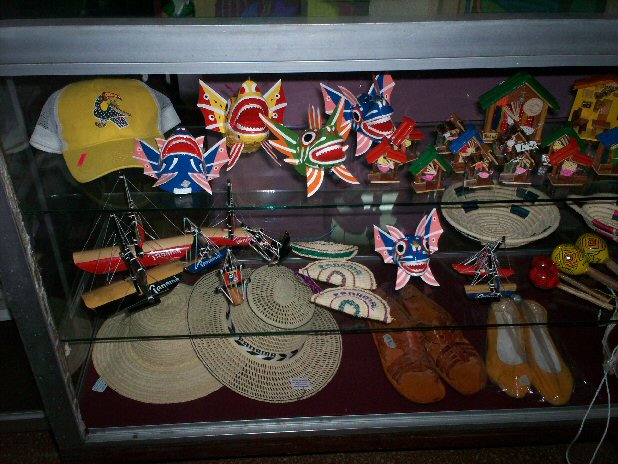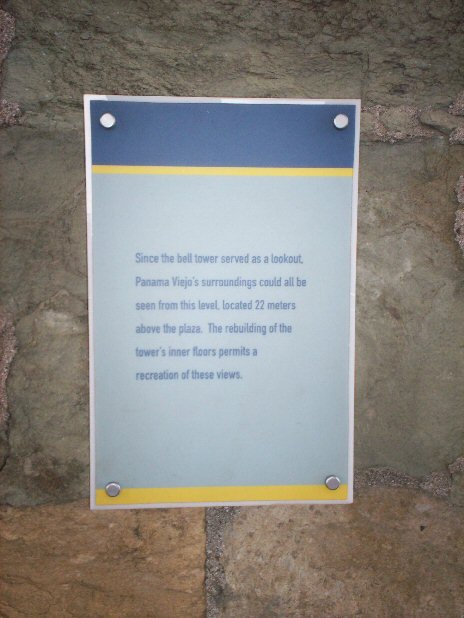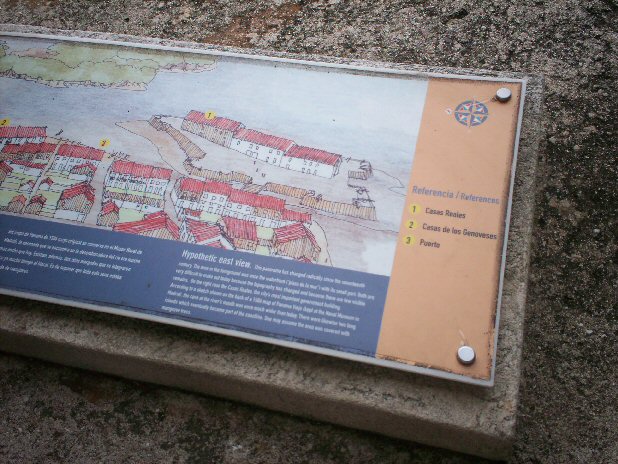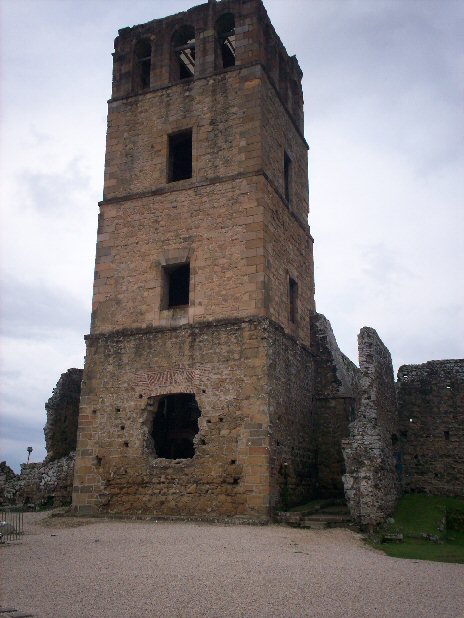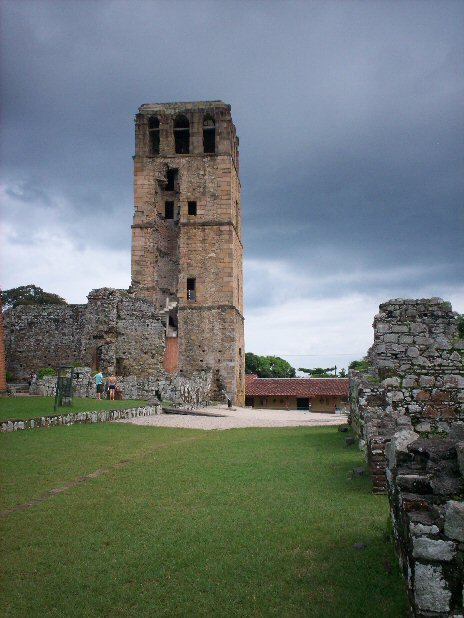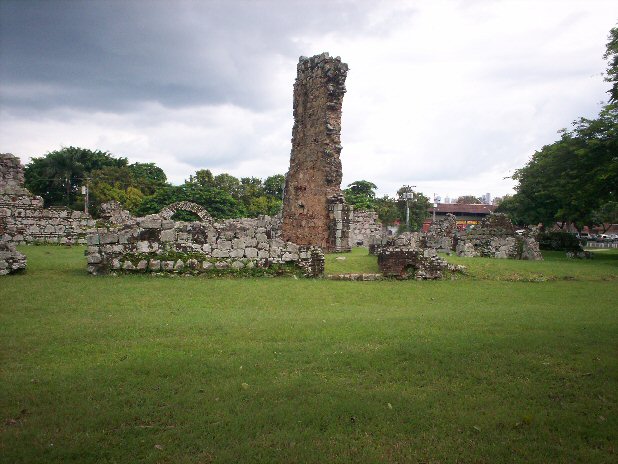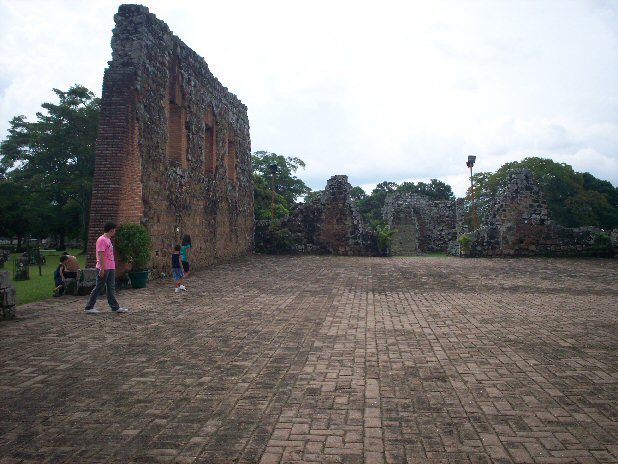Panama la Vieja Has Her 490th Birthday
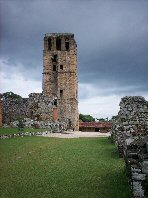
Last Saturday Panama la Vieja had a birthday. The first European settlement on the Pacific coast of the Americas was 490 years old. In honor of the first city’s 490 years we took a little walk around the ruins and browsed the arts and crafts at the artisans’ shop over the weekend.
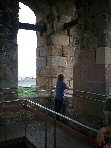 The Panama la Vieja ruins are on Via Cincuentenario. Either turn off of Via España or follow Avenida Balboa until it turns by the Atlapa Convention center and becomes Cincuentenario. There is a visitor center on the Bay but it is a little distant from the heart of the ruins and, except for a small gift shop, does not seem to have much to offer. There are a lot more arts and crafts to buy at the artisans’ shops farther down the road.
The Panama la Vieja ruins are on Via Cincuentenario. Either turn off of Via España or follow Avenida Balboa until it turns by the Atlapa Convention center and becomes Cincuentenario. There is a visitor center on the Bay but it is a little distant from the heart of the ruins and, except for a small gift shop, does not seem to have much to offer. There are a lot more arts and crafts to buy at the artisans’ shops farther down the road.
There is parking by the artisans’ shops where you can get a little chicheme, coconut drink, and snacks before heading into the past. Tickets are $2 each to enter the main part of the ruins and $2 each to climb the four story tower.
The tower is worth the effort as it affords a nice view of the ruins and has excellent explanations of the restoration efforts and history of the city in both English and Spanish. At the tower there are also guide books and a brief history of Panama la Vieja in English.
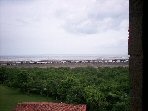 The tower also provides a nice perspective where you can look out one window at the sea and from another look down at the remaining walls of the old city and outward toward the skyscrapers of downtown Panama City. There are lots of signs explaining the ruins as you walk among the walls of the ancient convent and cathedral. A little walk up Cincuentenario towards Via España brings you to the King’s Bridge (Puente del Rey) which dates from 1617 on the old road from Panama to Porto Belo. Although not used for traffic the bridge is still intact.
The tower also provides a nice perspective where you can look out one window at the sea and from another look down at the remaining walls of the old city and outward toward the skyscrapers of downtown Panama City. There are lots of signs explaining the ruins as you walk among the walls of the ancient convent and cathedral. A little walk up Cincuentenario towards Via España brings you to the King’s Bridge (Puente del Rey) which dates from 1617 on the old road from Panama to Porto Belo. Although not used for traffic the bridge is still intact.
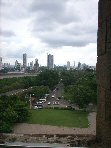 The best preserved building is the cathedral which was finished in 1626. Like the tower it has excellent signage and explanations in English as well as Spanish.
The best preserved building is the cathedral which was finished in 1626. Like the tower it has excellent signage and explanations in English as well as Spanish.
History says this first European settlement on the Pacific lasted 152 years until Henry Morgan and his privateers burned the city in search of Spanish gold which had been removed to ships off shore. The one gold treasure that the pirates could have had and missed was a gold altar which the inhabitants had painted black. This altar was later moved to the Church of St. Joseph (Iglesia de San Jose) in the rebuilt city and can be found in the same church in Casco Viejo today.
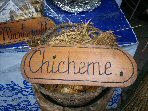 Taking a taxi from downtown, touring the grounds and the shops and returning to Via España for a movie at the Alhambra took two and a half hours. Wear “sensible” shoes as many of the paths between the ruins are gravel and you may wish to cut across the grassy areas. Bring cash too. There are some very nice arts and crafts in the artisans’ shops.
Taking a taxi from downtown, touring the grounds and the shops and returning to Via España for a movie at the Alhambra took two and a half hours. Wear “sensible” shoes as many of the paths between the ruins are gravel and you may wish to cut across the grassy areas. Bring cash too. There are some very nice arts and crafts in the artisans’ shops.

